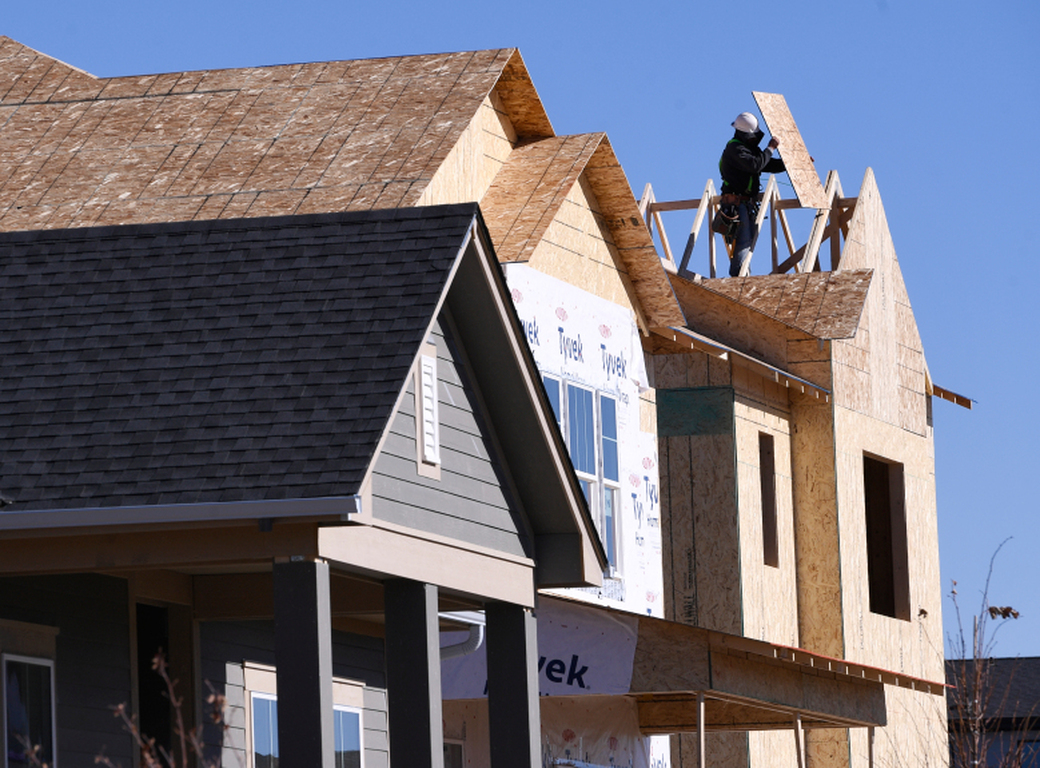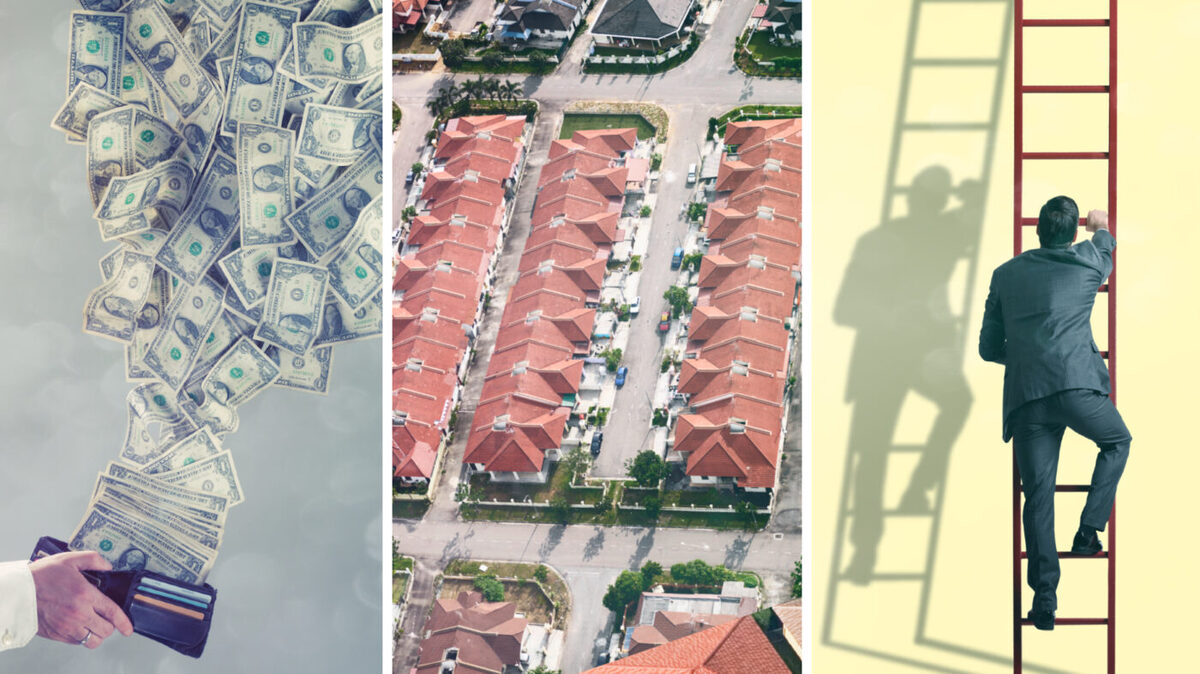These 5 trends are driving the real estate inventory crisis
This situation isn't just COVID- 19 related
In March of last year, just as the pandemic lockdown was upon us, Brad Inman invited me on his podcast to discuss the looming crisis we both expected in the real estate market. With businesses shutting down, people losing their jobs, and life grinding to a halt, we were pretty sure we were facing a crisis in the market, with a flood of distressed sales and foreclosures and cratering demand and prices.
As it turns out, we were wrong. Demand for homes skyrocketed, and prices shot up 10 percent year over year.
But there was still a crisis — it just wasn’t about demand and prices. It was about inventory. There simply haven’t been enough homes available to keep up with demand.
In fact, today’s inventory crisis is the greatest challenge the U.S. real estate market has faced since the mortgage bubble burst.
When I say “crisis,” this is what I mean: Just a few years ago, a normal market would have over 1 million single-family homes for sale in February as we began ramping up listings for spring.
This year, we’re down to just one-third of the normal level.
The inventory statistic actually understates the crisis because properties in many areas are in such demand that they go immediately into contract, with tens of thousands of sales bypassing the active market data altogether, spending essentially zero days on market.
Only the most diligent homebuyer, well-financed and armed with an aggressive buyer’s agent (and real-time market data), even has a shot at these homes.
How did we get here?
This situation isn’t just pandemic-related — we started 2020 with record-low inventory, and it’s only dropped from there. In fact, the inventory crisis has been a decade in the making, driven by five major trends that are unlikely to change anytime soon:
1. Low-interest rates
It might be counterintuitive, but ultra-cheap money is a driver of both increased demand and decreased supply. When rates are this low, it becomes very inexpensive to keep my first property for investment income when I buy a new home rather than selling.
This phenomenon of homeowners doubling up, buying but not selling, coupled with big institutional investment in single-family rental properties over the past decade, is the reason that there over 7 million previously resalable properties that have now shifted into the rental market.
As long as rates stay low, this will continue. The only time in the decade we saw inventory climb year over year was when mortgage spiked rates from 3.7 percent to 4.8 percent in the latter half of 2018.
2. ‘Buy low, sell never’
During the past decade, just as real estate holding costs plummeted, income on properties climbed. Innovations like Airbnb combined with an explosion of alternate dwelling units (ADUs) meant that single-family homes are much more likely to generate positive cash flow than ever before. It’s been an excellent decade to own real estate.
3. Underbuilding
The hangover from the bubble burst 12 years ago meant that homebuilders built about half as many homes for most of the past decade and are only now reaching long-term normal construction levels. This phenomenon limited the growth of housing supply, exacerbating the effect of low-interest rates on existing supply.
Underbuilding has led to an ironic twist in the market: would-be sellers are afraid to list their homes because there’s nothing to buy. The cycle perpetuates.
4. Demographics
We’re now well into the millennial era — there are more millennials than any other generation, and this crowd is coming into its peak years for earning and homebuying.
We have a solid five to 10 years of millennial demand in front of us. At the same time, boomers have had inexpensive mortgages for years, and they’ve held on to their homes much longer than previous generations.
5. Homeowner-focused policy
The CARES Act foreclosure moratorium has kept some properties from coming to market, staying instead in the hands of distressed owners. But the foreclosure pipeline was already at record lows before the pandemic hit, and Americans have gained a trillion dollars of home equity since then.
As a result, pandemic-distressed homeowners seem unlikely to add to our inventory any time soon. Although there are still 2.5 million homeowners in the mortgage forbearance program, many of whom have not made a mortgage payment in a year, these homeowners have gained significant equity wealth in that time.
People default on a loan when the deal is not worth saving, or they’re upside down on the value. Very few people are facing that situation this time around.
The fact is that policymakers have been focused on keeping people in their homes. Essentially all U.S. housing policy, whether tax, mortgage markets or pandemic-related, is aimed at helping people who already own their home, often to the detriment of new buyers.
What will help us emerge from the crisis?
The most important factor is mortgage rates. As rates fluctuate over time, look to a 3.5 percent threshold where consumers start feeling the pinch of higher payments. This will change the calculus of what they buy and also what they hold onto or sell to finance the new move.
New-home construction is also finally climbing and will begin to add a little to the market. More construction will be critical for boomers to move into retirement and millennials to get their first homes.
We also really need to change the focus of policy from homeowner-centric to housing market-centric. Loosening policy on foreclosures and construction would help, as would more flexible property tax rates that would keep fewer people locked into low-tax basis properties.
The good news is that in this crisis, Americans have gained trillions in wealth. Even those most tragically affected have been able to stay in their homes and benefit from large increases in equity. And there’s still tremendous demand waiting to be unlocked — if we can create the conditions to do so.
In March of last year, just as the pandemic lockdown was upon us, Brad Inman invited me on his podcast to discuss the looming crisis we both expected in the real estate market. With businesses shutting down, people losing their jobs, and life grinding to a halt, we were pretty sure we were facing a crisis in the market, with a flood of distressed sales and foreclosures and cratering demand and prices.
As it turns out, we were wrong. Demand for homes skyrocketed, and prices shot up 10 percent year over year.
But there was still a crisis — it just wasn’t about demand and prices. It was about inventory. There simply haven’t been enough homes available to keep up with demand.
In fact, today’s inventory crisis is the greatest challenge the U.S. real estate market has faced since the mortgage bubble burst.
When I say “crisis,” this is what I mean: Just a few years ago, a normal market would have over 1 million single-family homes for sale in February as we began ramping up listings for spring.
This year, we’re down to just one-third of the normal level.
The inventory statistic actually understates the crisis because properties in many areas are in such demand that they go immediately into contract, with tens of thousands of sales bypassing the active market data altogether, spending essentially zero days on market.
Only the most diligent homebuyer, well-financed and armed with an aggressive buyer’s agent (and real-time market data), even has a shot at these homes.
How did we get here?
This situation isn’t just pandemic-related — we started 2020 with record-low inventory, and it’s only dropped from there. In fact, the inventory crisis has been a decade in the making, driven by five major trends that are unlikely to change anytime soon:1. Low-interest rates
It might be counterintuitive, but ultra-cheap money is a driver of both increased demand and decreased supply. When rates are this low, it becomes very inexpensive to keep my first property for investment income when I buy a new home rather than selling.
This phenomenon of homeowners doubling up, buying but not selling, coupled with big institutional investment in single-family rental properties over the past decade, is the reason that there over 7 million previously resalable properties that have now shifted into the rental market.
As long as rates stay low, this will continue. The only time in the decade we saw inventory climb year over year was when mortgage spiked rates from 3.7 percent to 4.8 percent in the latter half of 2018.
2. ‘Buy low, sell never’
During the past decade, just as real estate holding costs plummeted, income on properties climbed. Innovations like Airbnb combined with an explosion of alternate dwelling units (ADUs) meant that single-family homes are much more likely to generate positive cash flow than ever before. It’s been an excellent decade to own real estate.
3. Underbuilding
The hangover from the bubble burst 12 years ago meant that homebuilders built about half as many homes for most of the past decade and are only now reaching long-term normal construction levels. This phenomenon limited the growth of housing supply, exacerbating the effect of low-interest rates on existing supply.
Underbuilding has led to an ironic twist in the market: would-be sellers are afraid to list their homes because there’s nothing to buy. The cycle perpetuates.
4. Demographics
We’re now well into the millennial era — there are more millennials than any other generation, and this crowd is coming into its peak years for earning and homebuying.
We have a solid five to 10 years of millennial demand in front of us. At the same time, boomers have had inexpensive mortgages for years, and they’ve held on to their homes much longer than previous generations.
5. Homeowner-focused policy
The CARES Act foreclosure moratorium has kept some properties from coming to market, staying instead in the hands of distressed owners. But the foreclosure pipeline was already at record lows before the pandemic hit, and Americans have gained a trillion dollars of home equity since then.
As a result, pandemic-distressed homeowners seem unlikely to add to our inventory any time soon. Although there are still 2.5 million homeowners in the mortgage forbearance program, many of whom have not made a mortgage payment in a year, these homeowners have gained significant equity wealth in that time.
People default on a loan when the deal is not worth saving, or they’re upside down on the value. Very few people are facing that situation this time around.
The fact is that policymakers have been focused on keeping people in their homes. Essentially all U.S. housing policy, whether tax, mortgage markets or pandemic-related, is aimed at helping people who already own their home, often to the detriment of new buyers.
What will help us emerge from the crisis?
The most important factor is mortgage rates. As rates fluctuate over time, look to a 3.5 percent threshold where consumers start feeling the pinch of higher payments. This will change the calculus of what they buy and also what they hold onto or sell to finance the new move.New-home construction is also finally climbing and will begin to add a little to the market. More construction will be critical for boomers to move into retirement and millennials to get their first homes.
We also really need to change the focus of policy from homeowner-centric to housing market-centric. Loosening policy on foreclosures and construction would help, as would more flexible property tax rates that would keep fewer people locked into low-tax basis properties.
The good news is that in this crisis, Americans have gained trillions in wealth. Even those most tragically affected have been able to stay in their homes and benefit from large increases in equity. And there’s still tremendous demand waiting to be unlocked — if we can create the conditions to do so.


 Menu
Menu




